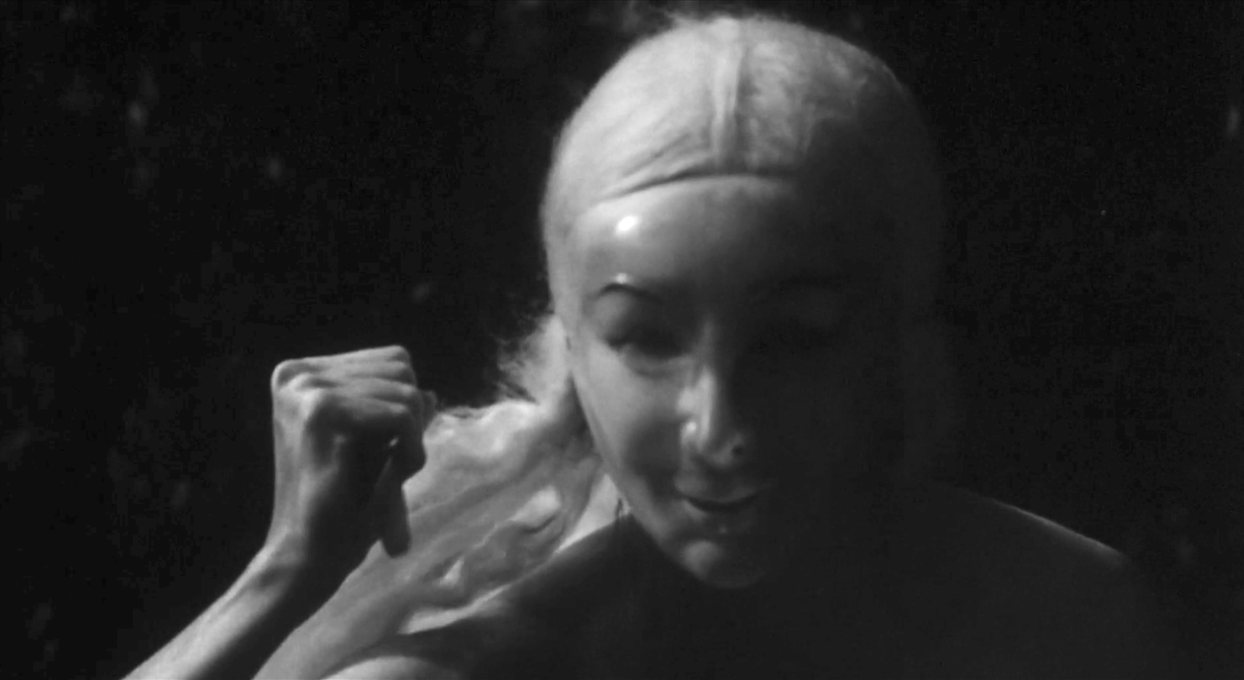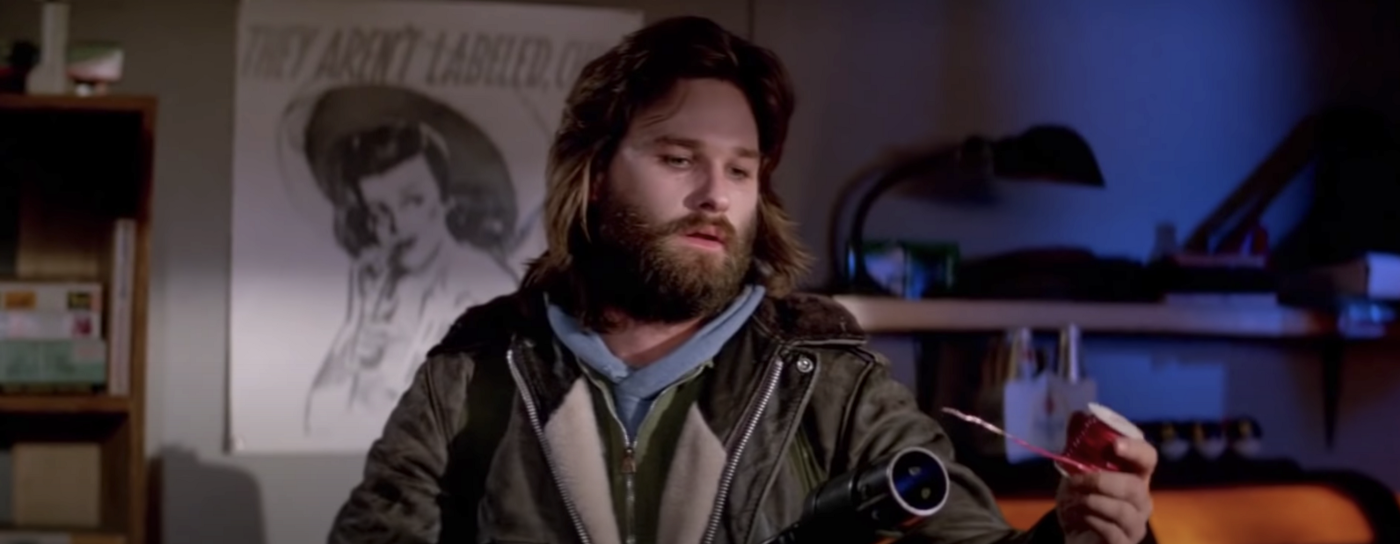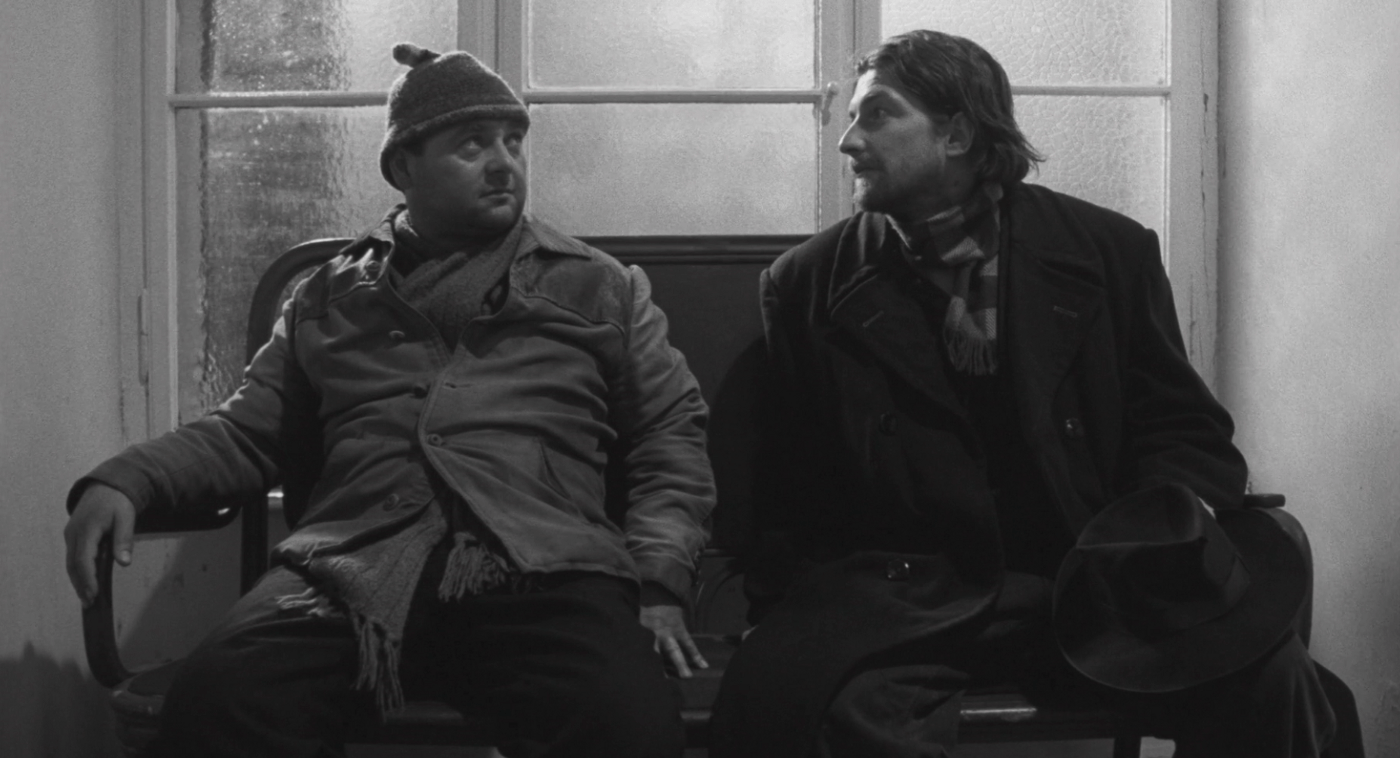
German director, Veit Helmer, made Tuvalu in 1999. It’s a fast-paced, comical, collage that runs the gamut from experimental film to melodrama. There is a little bit of dialogue and music but Tuvalu has the look and feel of a silent film. By its nature silent film requires a special emphasis on the language and grammar of filmmaking. Even with a few inter-title inserts, the silent filmmaker must rely on a special fluency with imagery. As an audience, we are more aware of the actual images we are digesting putting the craftsmanship of the filmmaker front and center.
Tuvalu pays homage to many films, but it pays particular attention to silent films made in the second half of the twentieth century, long after talkies were invented. One such film is Guy Madden’s Tales From The Gimli Hospital, a silent film which Madden made in 1988. There are a few moments when Helmer makes visual references to Tales from the Gimli Hospital, but Madden’s humor and tone can be felt throughout Tuvalu. There is a kind of joyful reveling in the campy cardboard sets and images which function more as signifiers than realistic scenery. For both Madden and Helmer allowing things to look “fake” or staged helps emphasize the formalism of their approach.

Helmer also makes reference to David Lynch’s 1977 movie Eraserhead. Like Tuvalu, Eraserhead is not truly a silent film but it certainly evokes the style. As with Tales From The Gimli Hospital, Eraserhead is referenced directly through the villain’s hairstyle, but Lynch’s influence is broader than just this one detail. Both Eraserhead and Tuvalu use a variation on noir lighting that heightens the contrast which blows out some of the highlights. It removes the polish from the film and lends it a stark atmosphere.

Another modern film that courts a silent feel is Chris Marker’s La Jetee. There is a quick parody where Tuvalu’s protagonist places a brassiere over his eyes and lies back on a hammock which visually refers to a famous still in La Jetee where’s the protagonist is traveling through time under a blindfold.

Battleship Potemkin is referenced several times in Tuvalu. The sailors’ uniforms in Helmer’s film look very similar to the ones in Sergei Eisenstein’s. Both movies pair the sailors with an old bearded priest. Helmer even steals a famous edit from Battleship Potemkin. There is a scene in Tuvalu where the heroine smashes a piece of plaster and Helmer cuts it to look like the famous scene in Battleship Potemkin when the soldier smashes a plate.
Not everyone is going to pick up on all these references. It’s a fun game for cinephiles, but Tuvalu certainly holds its own as an original film in and of itself. Its references to other films do not make it feel derivative. They create a subtext but the film is quirky, frantic, and entertaining independent of the subtext. The characters are compelling and they inhabit a strange world with its own logic and atmosphere. The film itself is processed in different tones like sepia and selenium shifting the mood from cool to warm and back again. Many of the shots are off-kilter or have strangely foregrounded compositions all of which engage and transport us into Helmers vision.
There is clearly an emulation of Jean-Pierre Jeunet’s style. The angels, compositions, and even the pacing feel similar to both Delicatessen and City of Lost Children. Even the main character, in Delicatessen, Luison, is very similar to Anton in Tuvalu. They both appear on the surface to be hapless bumblers but hide a clever and resourceful mind. Their demeanor is not unlike the film itself. On the surface, it’s goofy and odd but it is supported by consummate and clever craftsmanship.

There are more references. Charlie Chaplin’s Modern Times and Fritz Lang’s Metropolis are in there. There appears to be a reference to Tarkovsky’s Stalker too. I’m sure if I had gone to film school I would have caught a dozen more, but in the end, what matters is the film itself. It’s an inventive and visually lush film that provides experimental explorations and references to film history while also being light hearted and entertaining.

If you enjoyed this article click here for more
www.filmofileshideout.com/archives/favorite-scenes-no22-delicatessen



